Are you using SEO effectively to boost your business?
SEO is a cornerstone of any digital marketing strategy and especially to any content marketing strategy. It’s essential to deliver traffic, authority, leads, and sales, but you’ll only get those benefits if you do it right.
If not, your business might as well be invisible online. We know it’s not always easy to stay up to date, but you can’t relax when it comes to SEO.
Google’s always tweaking its search algorithms, so there’s no guarantee that SEO practices that worked in the past will keep working in the future.
If you’re new to SEO marketing, it can feel very overwhelming. But I’m here to break it down for you.
As a Content Writer here at OptinMonster, I work every day to write, update, and optimize our blog posts to rank in search. Our team keeps a close eye on current best practices, and we’re constantly testing and tracking our results to improve our SEO efforts. I’m excited to share what we’ve learned with you.
This beginner’s SEO guide includes explanations of all the basic concepts of SEO. I’ll also share tips to heBoost your business with our SEO beginner’s guide. Learn the key strategies to increase your website’s traffic and sales.lp improve how your web pages appear in search results, so you can get more traffic, leads, and sales.
- What Is SEO?
- SEO Glossary: Terminology You Need to Know
- How Does SEO Work?
- Top SEO Ranking Factors
- How to Improve Your Website’s SEO (7 Tips)
- How to Use SEO for Lead Generation
- FAQs
What Is SEO?
SEO stands for search engine optimization. It’s the practice of making your website more visible and attractive to search engines like Google and Microsoft Bing.
SEO is vital to any digital marketing strategy. You need your web pages to rank highly when users search for relevant keywords. This visibility allows potential customers to discover your website, along with the products, services, and content you offer.
At its core, SEO involves adjusting various parts of your website to improve your rankings in search results. Important adjustments include:
- Content: the words, headings, and images on your web pages
- Site architecture: how your website is structured
- Connections: links to and from your website and to web pages within your site
Search engine optimization efforts aim to increase organic traffic. That’s the traffic you get when visitors click a link in search results to get to your site. That’s in contrast to paid traffic, which comes from ads.
If you’re a beginner at SEO, reading about it can feel overwhelming. Most guides and tutorials use a lot of technical terms that can be confusing for a newbie. Before we go any further in our SEO guide, here’s a quick SEO glossary to help you find your bearings.
SEO Glossary: Terminology You Need to Know
These are some of the terms you’ll see in this guide and in other articles about SEO. I’ll discuss some of this SEO terminology in more detail throughout this post. By reading through these quick definitions now, you’ll have a better understanding of the basics as a beginner.
Algorithm: A set of rules that search engines use to determine the rankings of websites in search results. Algorithms consider various factors like content quality, user engagement, and backlinks.
Backlinks: Links from other websites that lead to your website. They are important for SEO because they signal to search engines that other websites consider your content valuable and authoritative.
Click-Through Rate (CTR): The percentage of people who click the link to your web page after seeing it in their search results. It’s calculated by taking the total number of clicks and dividing it by the total number of impressions. Impressions are the number of times your link was seen.
Content Optimization: The process of making sure content is written and presented in a way that search engines can understand and rank it effectively. This includes using relevant keywords, creating quality content, and improving user engagement.
Domain Authority (DA): A score, typically on a 100-point scale, that predicts how well a website will rank on search engine result pages (SERPs). Higher scores correspond to a greater ability to rank. This score was developed by Moz to measure a website’s online presence and trustworthiness.
E-E-A-T (Experience, Expertise, Authoritativeness, Trustworthiness): Factors used by Google to assess the quality of a webpage. It’s crucial for a website’s ranking in search results.
Google Helpful Content Update: A recent update to Google’s algorithm aimed at promoting content that provides substantial value to users, and demoting low-quality content that doesn’t serve users’ real needs.
Keyword Research: The process of finding and analyzing actual search terms that people enter into search engines. This research helps guide content creation and marketing strategies.
Link Building: The practice of acquiring new backlinks to your website to improve search engine rankings and increase organic traffic.
Local SEO: A strategy to optimize your website to rank higher in search results for local searches, often related to a specific geographical area.
Meta Description: A brief description of a webpage’s content that appears under the webpage’s title in search results. It helps users understand what the page is about and can influence click-through rates.
On-Page SEO: Refers to the optimization of individual web pages to rank higher and earn more relevant traffic in search engines. It involves optimizing the content and HTML source code of a page, including titles, meta descriptions, content, and images.
Off-Page SEO: Involves activities done outside of your website to impact your rankings within search engine results pages. This includes tactics like link building, social media marketing, and influencer outreach, which help increase the site’s trustworthiness and authority.
Organic Search: The process of obtaining natural placements on search engine results pages (SERPs) without paying for ad placement. It relies on SEO strategies to boost rankings.
Organic Traffic: The number of visitors coming to a website from organic search results, as opposed to paid advertisements or other sources.
Pay-Per-Click (PPC): An advertising model where advertisers pay a fee each time one of their ads is clicked. It’s often used to drive traffic to websites quickly, in contrast to earning traffic through organic search. Google Ads are an example of PPC advertising.
Search Queries: The words or phrases that users type into a search engine when looking for information, products, or services online.
SEO Audit: An examination of a website to identify its strengths and weaknesses in relation to SEO, and to pinpoint opportunities for improvement.
SERP (Search Engine Results Page): The page displayed by a search engine in response to a user’s search query, showing a list of results, including organic search results, ads, and other features like maps or reviews.
How Does SEO Work?
To understand how SEO works to improve search rankings, we’ll need to break it down a little. Throughout this guide, we will mostly focus on Google. Google search currently has an 81.65% market share, with the next highest being Bing at 10.65%.
Importance of Search Ranking
When you talk about search ranking in SEO, you’re talking about the position of your content on search engine results pages (SERPs).
If you have a #1 ranking, your web page appears first in SERPs. That puts it at the top of the page unless there’s a Sponsored result above it. Also, sometimes Google places special info snippets above the main search rankings
Here’s an example of a Google SERP for the search query “content marketing for libraries.” In this case, there are no ads or snippets at the top, so the first 2 items on the page are the webpages ranking #1 and #2 for that search query.
Here’s a different example, where there are 2 Sponsored results above the organic search results.
Ideally, you want your web page content to appear as one of the top 3 results. After the to #1 ranking, the average click-through rate (CTR) plummets quickly.
According to 2024 data from FirstPageSage, here are the average CTRS or the top 5 search positions:
- #1: 39.8%
- #2: 18.7%
- #3: 10.2%
- #4: 7.2%
- #5: 5.1%
Their research also found that the ads at the top of the SERP pages only average a 1-2% CTR, meaning organic search results are absolutely vital to any digital marketing strategy.
Google SERP Features
Google also often places special elements at the top of the result pages. They’re generally referred to as SERP features. Unlike the Sponsored results, these are organic search results, not paid ones. That means you use SEO strategies to try to be included in these special elements.
Here are a few common Google SERP features:
- Featured Snippets (also known as Google Answer Boxes): These are quick answers to common queries and are pulled from top-ranking web pages.
- Image Packs, Shopping Results, and News Boxes: If Google believes the search query is closely related to images, products, or recent news, it will may display the search results from, Google Images, Google Shopping, or Google News on the main SERP.
- Video Boxes: Google will sometimes will feature an embedded video that it believes will be helpful for the user.
- Local Packs: If Google believes the user is searching for a local business, it may showcase a list of local businesses, often with maps and contact information.
Here’s an example of an article we’ve had great SEO success with here at OptinMonster. We currently rank #1 and have the featured snippet for the search query “email subject line.”
By earning this featured snippet, we achieved a high level of prominence on the 1st page of search results. In fact, above the fold, our article is the only direct link that searchers see.
This is an example of a huge SEO win. “Email subject line” has a monthly global search volume of 6,300, this article raises the awareness of our website and product and drives traffic to our blog.
How Does Google Search Work?
To understand SEO, you’ll also need to know how Google search works.
Google aims to deliver relevant search results as part of its bid to “organize the world’s information and make it universally accessible and useful”.
To do that, the search engine has to know what information is out there. Here’s how that process works.
- Google has automated software called search bots or spiders. These bots visit web pages in a process called crawling the web.
- Then they add the pages they crawl to Google’s index, which is a huge catalog of trillions of web pages.
- When people search, Google shows the most relevant results from that catalog.
People usually type or say words related to what they are looking for. These are called keywords, and as you’ll see, they are an important part of SEO. We’ll look at those in more detail later in this guide.
How Google Determines Search Results
Here are the 2 main ways that Google determines how pages will rank for search queries:
- Search Algorithm: This is the complex software program that analyzes billions of webpages and determines their ranking in search results. It considers hundreds of factors, including website content, relevance to search queries, backlinks, and technical SEO aspects.
- Search Quality Raters: These are human specialists who evaluate search results using Google’s Search Quality Rater Guidelines (PDF). They focus on the concept of E-E-A-T (Expertise, Experience, and Authoritativeness) to assess content quality, trustworthiness, and the overall reputation of the website.
If you want to
Top SEO Ranking Factors
Content Quality: This remains the king of SEO. Quality has always been important for search rankings, but Google has double-downed on its importance with its recent Helpful Content Update.
Search Intent and Content Relevancy: Understanding the “why” behind a search query (search intent) is crucial. Your content should directly address the user’s needs and provide the information they’re looking for.
Backlinks: Links from high-quality websites to yours act like votes of confidence for Google. Building a strong backlink profile is essential for good rankings.
Website Loading Speed: People (and Google) hate slow websites. Optimizing your website for fast loading speed is crucial for a positive user experience and SEO.
Mobile-Friendliness: With most searches now happening on mobile devices, having a website that’s responsive and easy to navigate on mobiles is essential.
Technical SEO: This encompasses various technical aspects that make your website crawlable and understandable by search engines. This includes factors like site structure, URL structure, and schema markup.
E-E-A-T (Experience, Expertise, Authoritativeness, and Trustworthiness): Google prioritizes content from websites and authors it deems credible and trustworthy. Building expertise in your niche and establishing yourself as a reliable source of information is important.
User Experience (UX): Google wants users to have a positive experience on your website. This includes factors like clear navigation, mobile-friendliness, and absence of intrusive ads.
How to Improve Your Website’s SEO (8 Tips)
Next, let’s explore a few of the most important SEO tips. We’re not trying to cover every single best practice or strategy, but these tips will give put you on the right path in your SEO efforts.
- Conduct an SEO Site Audit
- Do Keyword Research (With Suggested Tools)
- Find LSI Keywords
- Write Helpful and Trustworthy Content
- Show Experience and Expertise
- Use On-Page SEO Best Practices
- Build Links
- Optimize for Mobile
1. Conduct an SEO Site Audit
Before diving headfirst into optimization, it’s crucial to understand your website’s current SEO health. An SEO site audit acts as a checkup, revealing areas that need improvement and highlighting your strengths.
Here’s what to look for:
- Technical SEO: Is your website mobile-friendly? Does it load quickly? Are there any broken links or crawl errors?
- Content Quality: Is your content informative, engaging, and relevant to your target audience?
- Google Rankings & Keywords: How are people currently finding your site through Google search?
- On-page SEO: Are your title tags and meta descriptions optimized with relevant keywords?
There are several free and paid SEO audit tools available online. The best place to start is probably Google Search Console, which is free. If you’ve never used it before, I’ve written the guide below to help you get started.
Learn MoreGoogle Search Console: Beginner’s Guide With Steps & Tips
2. Do Keyword Research (With Suggested Tools)
Keywords are the building blocks of SEO. They are the words and phrases people use to search for information online.
If you want you site to rank in search, you need to identify search terms that:
- Are closely related to your content, products, or services
- Have a high search volume
- Will be possible to rank for
- Are likely to drive interested customers to your site
Here are some excellent free and paid keyword research tools to get you started:
- Google Keyword Planner: This free tool exists within your Google Ads account. It provides insights into search volume and competition for various keywords.
- WPBeginner Keyword Generator Tool: Another free tool, you simply enter a main keyword, and it generates dozens, if not hundreds, of related keyword suggestions.
- Semrush: If you want to dive deep on your SEO, then this is the tool for you. Semrush is pricey, starting at $129.95 a month, but it’s powerful. For instance, you can enter the URLs for competitor articles to discover the keywords they’re ranking for.
- Answer the Public: This tool helps discover long-tail keywords and search queries phrased as questions. You can conduct a limited amount of research for free before upgrading to a paid plan.
- Ahrefs: Another advanced SEO tool, similar to Semrush. Plans start at $99 a month, but prices increase based on usage.
These are just a few of the keyword research tools available. Check out our complete guide to learn more:
Learn More21 Best Keyword Research Tools to Boost Your Organic Traffic
Bonus Tip: Don’t just stuff your content with keywords! Focus on creating high-quality content that naturally incorporates relevant keywords.3. Find LSI Keywords
Latent Semantic Indexing (LSI) keywords are semantically related terms that expand on your main keyword. Including LSI keywords demonstrates to search engines that your content comprehensively covers a topic.
For instance, if your main keyword is “hiking boots,” some relevant LSI keywords could be “waterproof hiking boots,” “best hiking boots for men,” or “types of hiking boots.”
There are several ways to find LSI keywords:
- Google Search Suggestions: As you type in your main keyword on Google, pay attention to the suggested searches that appear. These are often excellent LSI keyword ideas. Also look at the “People Also Ask” and “Related Searches” SERP features.
- LSI Keyword Research Tools: Many of the tools in the previous tip can help you find LSI keywords, as well. There are also tools that are more specifically dedicated to LSI, such as Several online tools like LSIGraph.com or Keywordtool.io can help you discover relevant LSI keywords.
4. Write Helpful and Trustworthy Content
High-quality content is the cornerstone of successful SEO. Google prioritizes informative, engaging, and trustworthy content that genuinely addresses users’ search queries.
Here are some tips for crafting exceptional content:
- Focus on User Intent: Understand the “why” behind a search query. What information are users looking for?
- Provide Value: Offer solutions, answer questions, and go beyond what other websites might be saying.
- Maintain Credibility: Back up your claims with data, statistics, and links to reputable sources.
- Optimize Readability: Structure your content with clear headings, bullet points, and short paragraphs for easy reading.
By consistently creating valuable content, you establish yourself as a reliable source and attract a loyal audience, which is a positive SEO signal for Google.
5. Show Experience and Expertise
Google values Expertise, Experience, and Authoritativeness (E-E-A-T) when ranking websites. Here’s how to demonstrate E-E-A-T:
- Create an Author Bio: Showcase your qualifications and experience related to your website’s niche.
- Link to Credible Sources: Cite reputable sources to support your claims and demonstrate your knowledge of the subject matter.
- Guest Blog on Established Websites: Contributing articles to well-respected websites in your niche helps build your reputation and online authority.
- Write From Your Own Experience: This can be especially important in tutorials and guides. Make it clear that the instructions, analysis, and examples you provide come from your own experience. Don’t be afraid to write in the first person!
6. Use On-Page SEO Best Practices
Here are some of the most important things you can optimize to improve your on-page SEO:
- Title Tag: This is the web page name that appears in search results and on browser tabs.Create clear, concise, and keyword-rich titles (ideally under 60 characters) that accurately reflect your page’s content.
- Meta Description: These short snippets (around 160 characters) appear under your title tag in search results. Use meta descriptions to entice users to click on your page by summarizing the content and including relevant keywords.
- Images: Reduce the file size of any large images you want to include on your web page. Use descriptive filenames and alt text descriptions. Include relevant keywords, so they’ll be more likely to show up in image searches.
- Internal Links: Add links to other relevant pages on your website. Use descriptive anchor text (the hyperlinked text that users click on) that makes it clear what the linked page is about.
7. Build Links
Link building is the foundation of off-page SEO. Backlinks are essentially links from other websites pointing to yours. In Google’s eyes, backlinks act like votes of confidence for your website’s credibility and value. Here are some strategies to acquire high-quality backlinks:
- Link-worthy Content: Develop content so informative and valuable that other websites naturally want to link to it.
- Guest Blogging: As mentioned earlier, guest blogging on relevant websites allows you to earn backlinks.
- Broken Link Building: Find broken links on websites in your niche that point to non-existent or outdated content. Reach out to the website owner and suggest your relevant content as a replacement. This is a win-win situation as you get a backlink and the website owner gets valuable, up-to-date content.
- Industry Directories and Awards: Submitting your website to relevant industry directories or award programs can earn you valuable backlinks. However, focus on high-quality directories with good domain authority.
- Online PR and Outreach: Build relationships with journalists, bloggers, and influencers in your niche. These relationships can help you earn more backlinks.
- Social Media Promotion: Sharing your content on social media can increase its visibility and encourage others to share it on their websites, potentially leading to backlinks.
8. Optimize for Mobile
In today’s mobile-first world, optimizing your website for mobile devices is no longer an option, it’s a necessity for good SEO. Here’s why:
- Mobile-First Indexing: Since 2018, Google has primarily used the mobile version of your website for indexing and ranking. This means if your mobile site isn’t user-friendly, it can hurt your overall SEO performance.
- Improved User Experience: Most web traffic now comes from mobile devices. A website that’s slow, clunky, or difficult to navigate on mobiles will frustrate users and lead to a high bounce rate (percentage of visitors leaving shortly after arriving). This is a negative SEO signal for Google.
Here’s how to optimize your website for mobile:
- Mobile-Responsive Design: Ensure your website automatically adjusts its layout and content to fit any screen size, offering an optimal viewing experience on mobiles, tablets, and desktops.
- Fast Loading Speeds: Mobile users are even less patient with slow loading times than desktop users. Optimize images, minimize redirects, and leverage browser caching to ensure your mobile site loads quickly.
- Easy Navigation: Make sure your menus, buttons, and links are large enough for easy tapping on a mobile touchscreen. Avoid complex navigation structures that require a lot of scrolling or zooming.
- Test on Different Devices: Use Google’s Mobile-Friendly Test tool and other online resources to test your website on various mobile devices and identify areas for improvement.
By prioritizing mobile optimization, you create a user-friendly experience that keeps visitors engaged and sends positive signals to search engines, ultimately boosting your website’s SEO.
How to Use SEO for Lead Generation
Once you’ve gone through these tips, you’ll likely start getting more and more traffic on your website. But did you know that nearly half of all visitors leave a website without taking any action?
That’s called the bounce rate. It refers to people who find a web page through search, view only that page, and exit the site without clicking any links, purchasing anything, or providing any information.
According to 2023 research fro DataBox, the median bounce rate across all industries is 44.82%.
How can you keep these visitors on your site for longer? Or even better, how do you collect their email addresses so you can nurture them into customers?
That where OptinMonster comes in!
OptinMonster is the best lead-generation software available. Our onsite marketing campaigns help you convert your website traffic into leads and sales.
You can use our lightbox popups, floating bars, inline forms, and other campaigns to collect email addresses for your email marketing list.
You can offer an incentive with a lead magnet, such as a coupon code, PDF guide, or free ebook
Our robust targeting and triggering rules help you show your campaigns to the right people at the right time. Some of these rules include:
- Exit-Intent® Technology: Capture your visitor’s email address before they leave your site
- Page-Level Targeting: Show visitors special offers based on the content they’re looking at on your site
- Timed Display and Scroll Triggers: Only show your popup when a user has spent a certain amount of time on your site or has scrolled through a specific percentage of a page’s content.
With a great email list full of high-quality leads, you’ll be able to start an email marketing strategy that will win more sales and revenue for your business.
FAQs About SEO
We’re almost done with our in-depth SEO guide, but before we go, let’s answer a few common SEO questions.
What is White Hat vs Black Hat SEO?
You may have heard the terms white hat SEO and black hat SEO. Taking its cue from old-time Westerns where the good guys wore white hats and the bad guys wore black ones, the difference between white hat vs black hat SEO is the difference between accepted SEO practices and ones that are seen as less ethical.
White hat SEO includes all the SEO practices we’ve talked about so far which take a long term approach to site optimization and focus on the user experience and what people need.
In contrast, black hat SEO is about trying to take shortcuts and game search engines. This rarely works. And, black hat blog posts and content can get you penalized.
Black hat SEO practices to avoid include:
- Keyword stuffing
- Thin content
- Automated comment spam
- Content scraping
- Cloaking, hidden text, and doorway pages
- Sneaky redirects and malicious site behavior
- Link schemes
Learn more about white hat vs black hat SEO in our guide.
Are Google search results personalized?
Sometimes. Google encourages you to log in to your Google account and to link it to your Chrome browser. And it also collects your search history. That can result in personalized search results. If you want to avoid this, you can search in an incognito or private window so you get the true picture on SEO.
How do you get to the top of Google search results?
Here’s the truth—only 1 site can be number 1 for a particular keyword, and there’s a lot of competition out there. But optimizing your site can make a difference to which site that is, as rankings fluctuate all the time. Plus, as long as you’re in the top 3, or at least on the first page, you’ve got a chance for people to find and click, which is what you want. If you deliver what they need after the click, that increases your chances of being relevant for future searches for that term.
Why is SEO so important?
If you don’t look after SEO, you can get lost among the trillions of links out there. SEO gives you a shot at ranking for the terms which your customers use, so you can do better business.
That’s it!
SEO is a huge topic, and there’s certainly a lot more to it than we’ve covered here. However, if you’re a beginner, you now know enough of the basics to get started with a successful SEO strategy.
Want to learn more about SEO? These posts take a closer look at some of the topics we’ve explored in this guide:
- Unveiling 10 Powerful SEO Ranking Factors
- 15 SEO Tips to Boost Your Traffic & Rankings
- On-Page SEO Checklist: How to Fully Optimize Your Posts
- How to Incorporate Social Media Into Your SEO Strategy
- 50+ Powerful SEO Statistics
Don’t forget that getting traffic to your site is just the first step in an effective digital marketing strategy. Use OptinMonster to turn your website visitors into subscribers and customers!

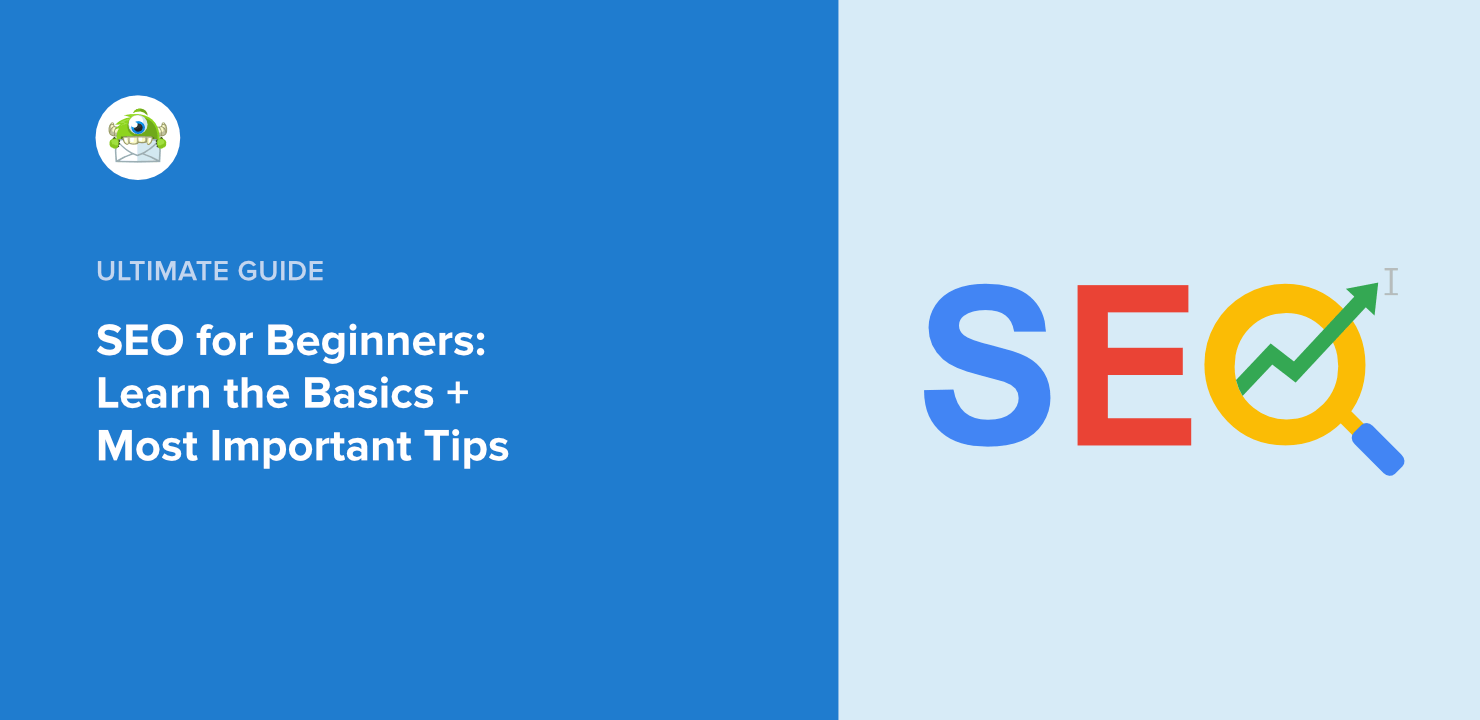
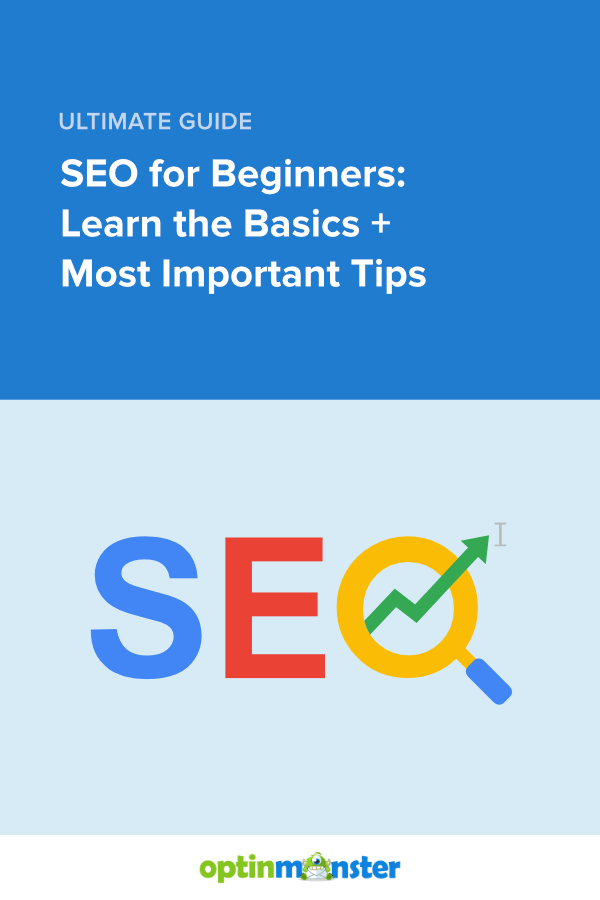
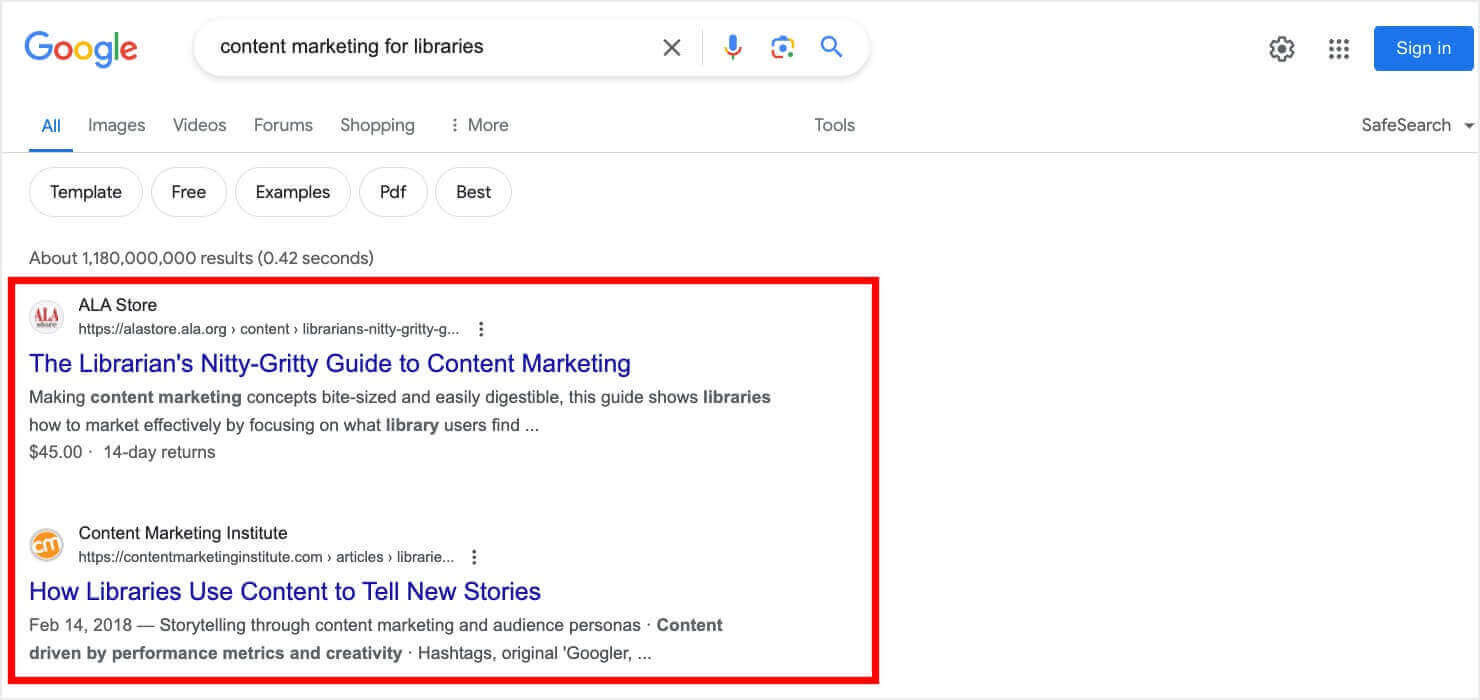
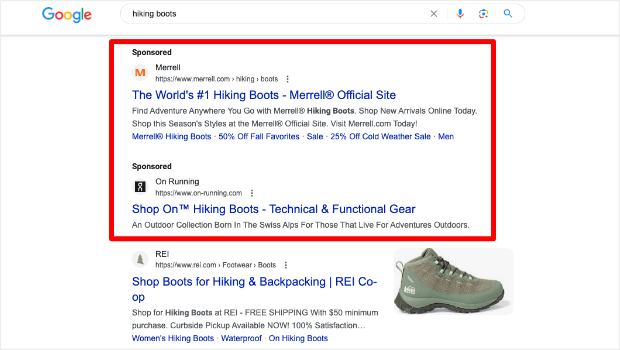
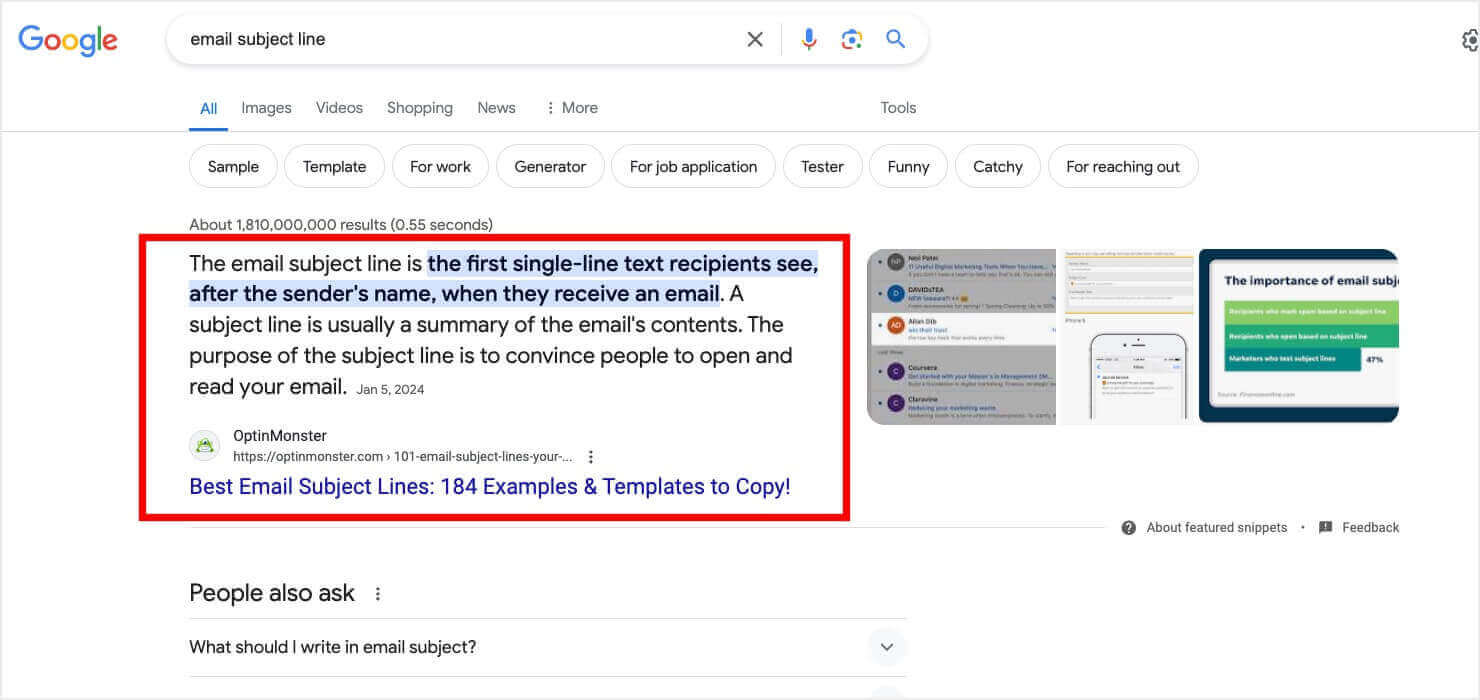
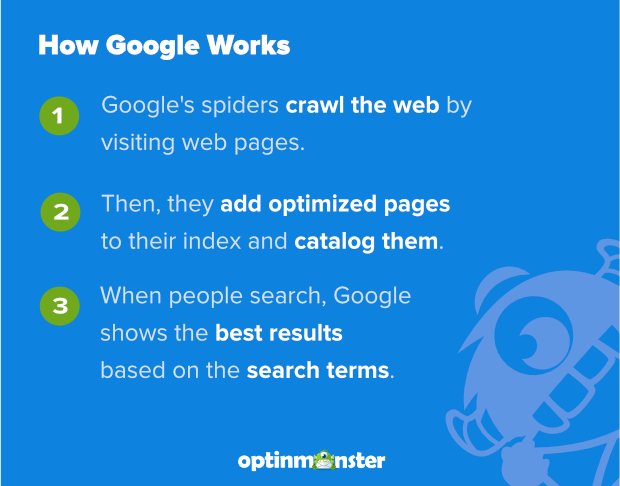
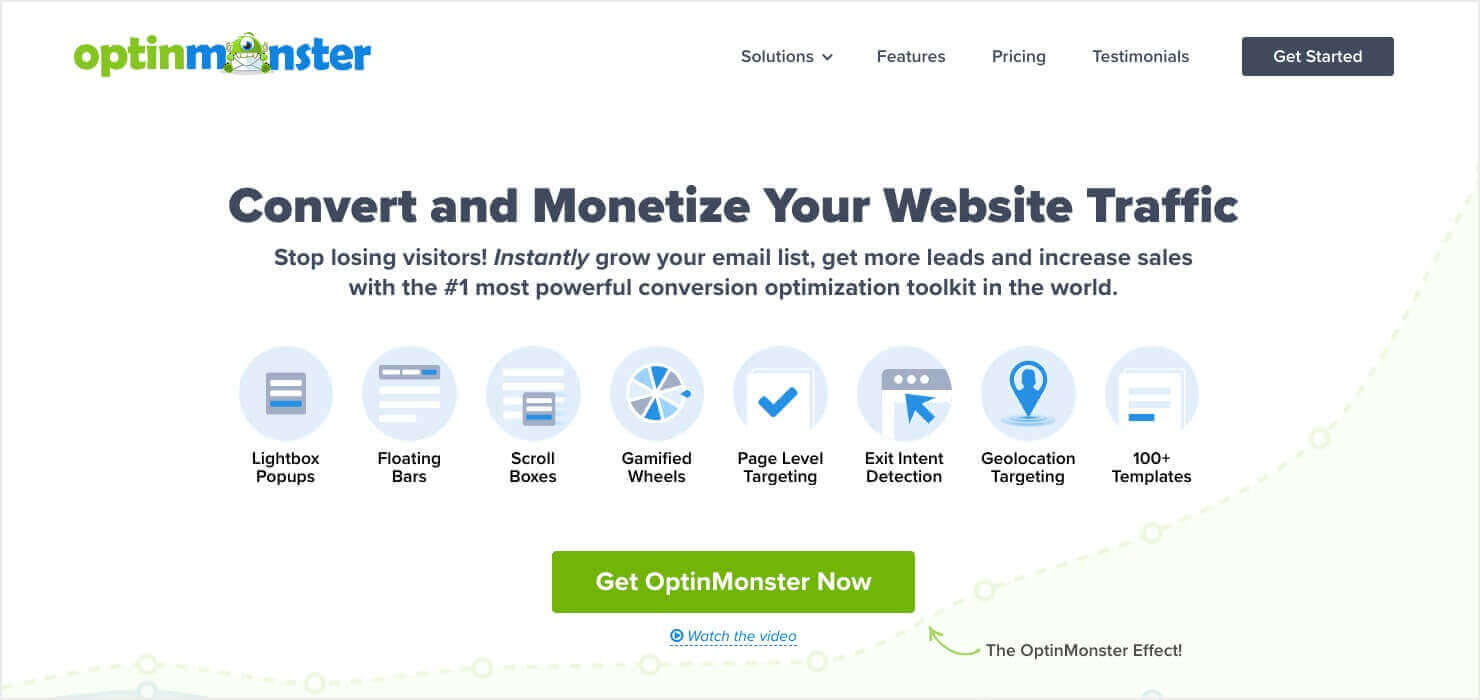










Add a Comment